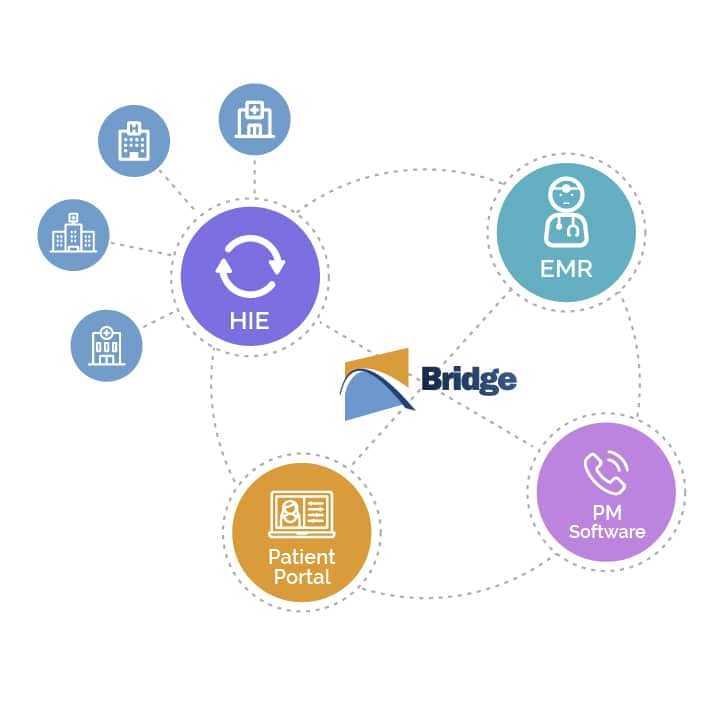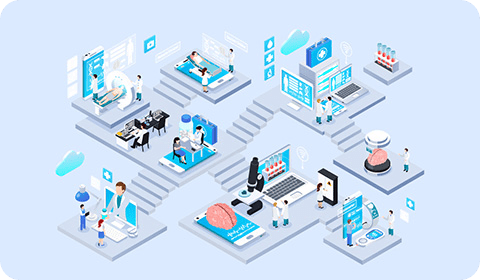We’re HL7 and API interface standard experts
HL7 is the most commonly used set of standards in the US healthcare industry and provides a comprehensive framework to exchange clinical and administrative data.
APIs, which can include FHIR-based APIs, are a modern interface standard becoming commonplace in healthcare. But many EHRs don’t offer the depth of API endpoints that Bridge Interface does for its feature-rich functionality. In these cases, the system often leverages a combination of HL7 and API interface standards to reach the client’s desired functionality.
HL7 standards are divided into two main categories: messages and consolidated clinical document architecture (CCDA) files.
Messages
Seamlessly interface with multiple EHRs to transmit the most common HL7 messages:
- SIU (Scheduling Information Unsolicited)
- ADT (Admission, Discharge, Transfer)
- ORU (Observation Result)
Bridge Interface allows for a complete and secure bidirectional integration of these messages with an EHR system, which allows the portal to display real-time appointment data, laboratory values, and patient demographic information directly from your EHR.
CCDA
Bridge Interface offers a proprietary CCDA parser to distribute patient data from CCDAs to the patient portal, regardless of the source EHR. CCDAs are standardized templates for electronic data exchange that include the patient’s medical conditions, medications, allergies, and vital signs. Healthcare providers can transmit a CCDA with each patient visit to Bridge. This data is then aggregated and parsed into the portal to make it available to the patient in an easy-to-read format.

